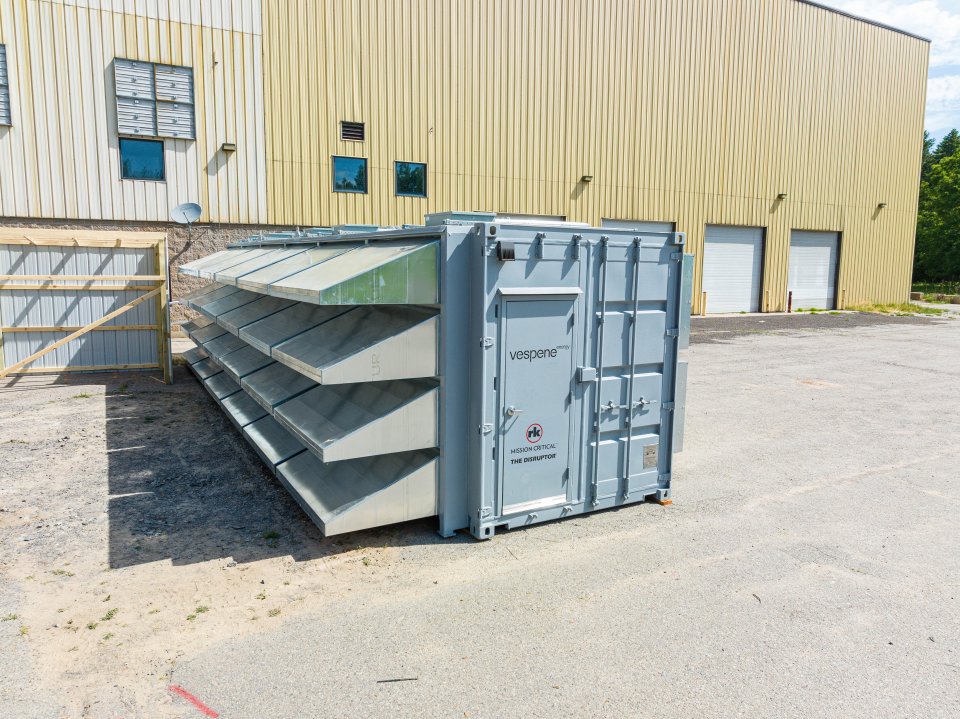Power a Self-Sustaining Microgrid including Data Center
Electricity generated from landfill gas (LFG) is a valuable resource that can be used to service onsite loads and reduce electricity costs, however onsite loads may not be able to use all the available LFG electricity. A self-sustaining microgrid:
- Does not require a grid interconnection to generate revenue from LFG electricity.
- Can serve onsite loads to reduce electricity costs and provide excess energy for data processing in modular data centers.
- Can include electric vehicle charging stations if there is an onsite need.
Criteria:
- Minimum LFG flow rate of as low as 100 cubic feet per minute at 35 percent methane.
- Sufficient area for onsite end use equipment (e.g., half an acre).
- A high-speed internet connection may be required depending on the type of data processing. There is added location flexibility for data processing that only requires satellite or microwave internet.
Pros:
- Onsite microgrids can provide:
- Power to an external end user’s equipment placed on site (e.g., modular data processing center) as well as landfill electricity uses (e.g., leachate management).
- A source of income for landfills in rural locations with few end use options.
- An option to monetize collected LFG while another LFG energy project is in the planning or construction phase.
- A data center can be scaled up or down over time, adding flexibility for open or closed landfills.
Cons:
- Microgrid technologies are relatively new, so there is a lack of standards and regulations regarding the best ways to synchronize them with the main power grid and inconsistency as to whether they should be classified as electrical utilities.
- Modular data centers and their technologies are also relatively new so regulations and permitting for this project type are still evolving. Staff will need specific industry knowledge to manage and operate the data center.
Economic Considerations:
- Developers may fund the capital costs required for a project and take care of ongoing operations and maintenance. This would reduce or avoid the financial obligation of the landfill owner for a project.
- Developers may build in a “floor price”, a yearly minimum guaranteed payment, that is paid to the landfill owner on a monthly basis to mitigate any financial risk to the landfill.
- Developers may also pay the landfill owner a percent royalty based on project revenues.
More Information:
- Generate LFG Electricity for Microgrid, EPA LMOP
- How Microgrids for Data Centers Increase Resilience, Optimize Costs, and Improve Sustainability (pdf) (2 MB), Schneider Electric
- Resilient Microgrids for Critical Services, Rhode Island Office of Energy Resources
- Webinar: Electricity Options for Remote Location or Low Landfill Gas Flow, EPA LMOP
References
1 Vespene Energy. PR Newswire. Vespene Energy and Viridi Energy Launch Pilot Using Landfill Methane Emissions to Power Onsite Data Processing. May 2, 2023. https://www.prnewswire.com/news-releases/vespene-energy-and-viridi-energy-launch-pilot-using-landfill-methane-emissions-to-power-onsite-data-processing-301813343.html. Accessed October 13, 2023.
2 Vespene Energy. Discussion with LMOP. August 18, 2023.
3 U.S. EPA. LMOP Landfill and Landfill Gas Energy Project Database. December 2023. https://www.epa.gov/lmop/lmop-landfill-and-project-database.

